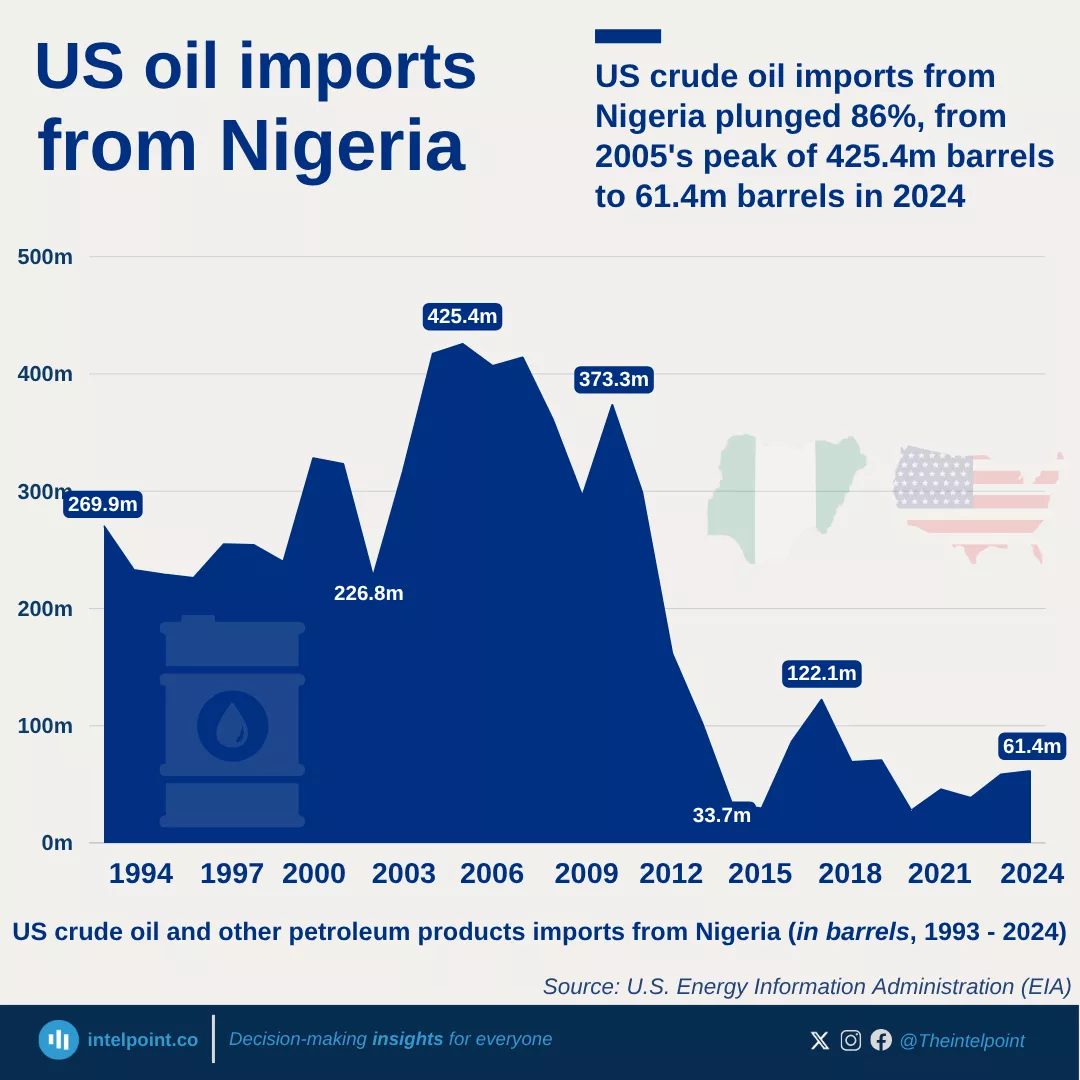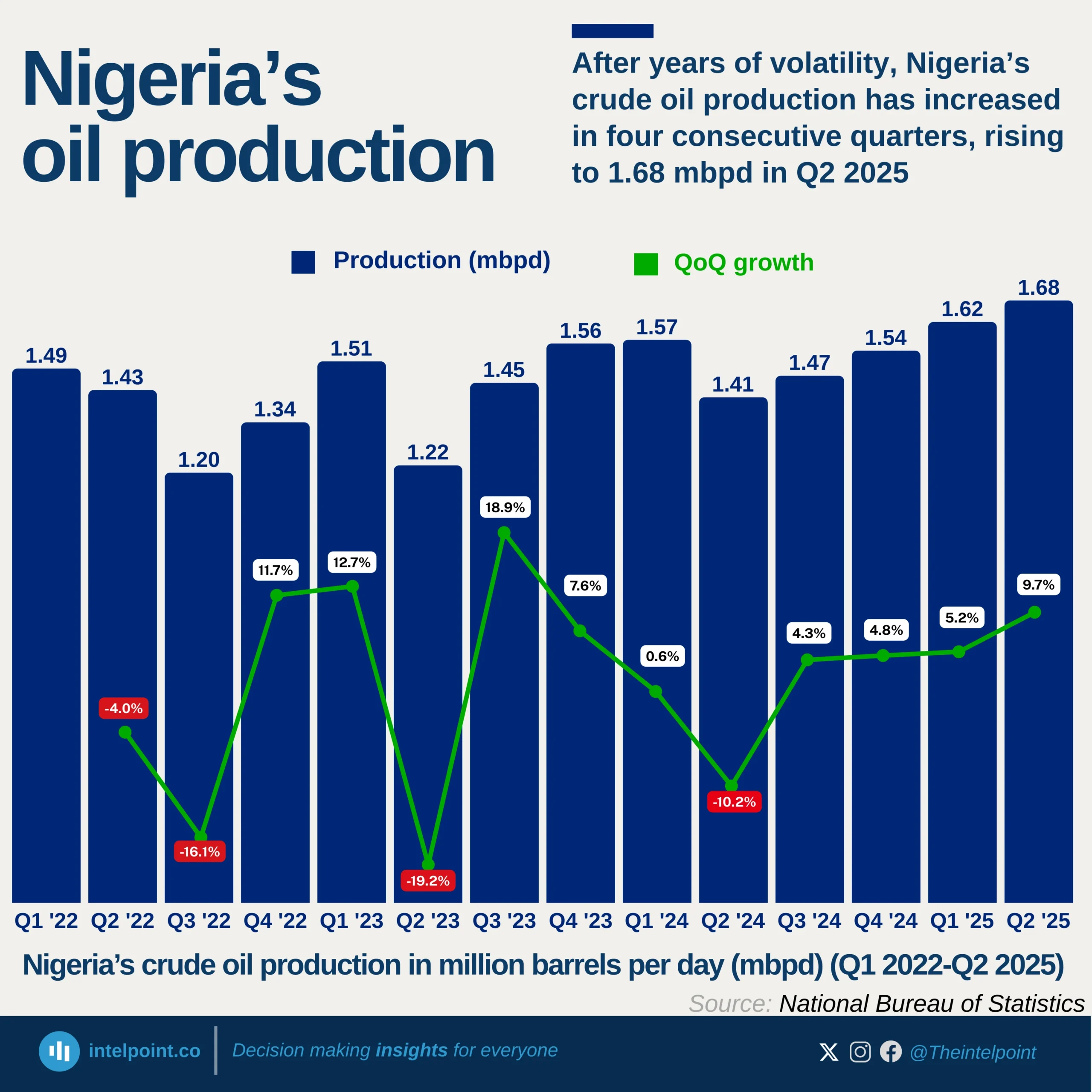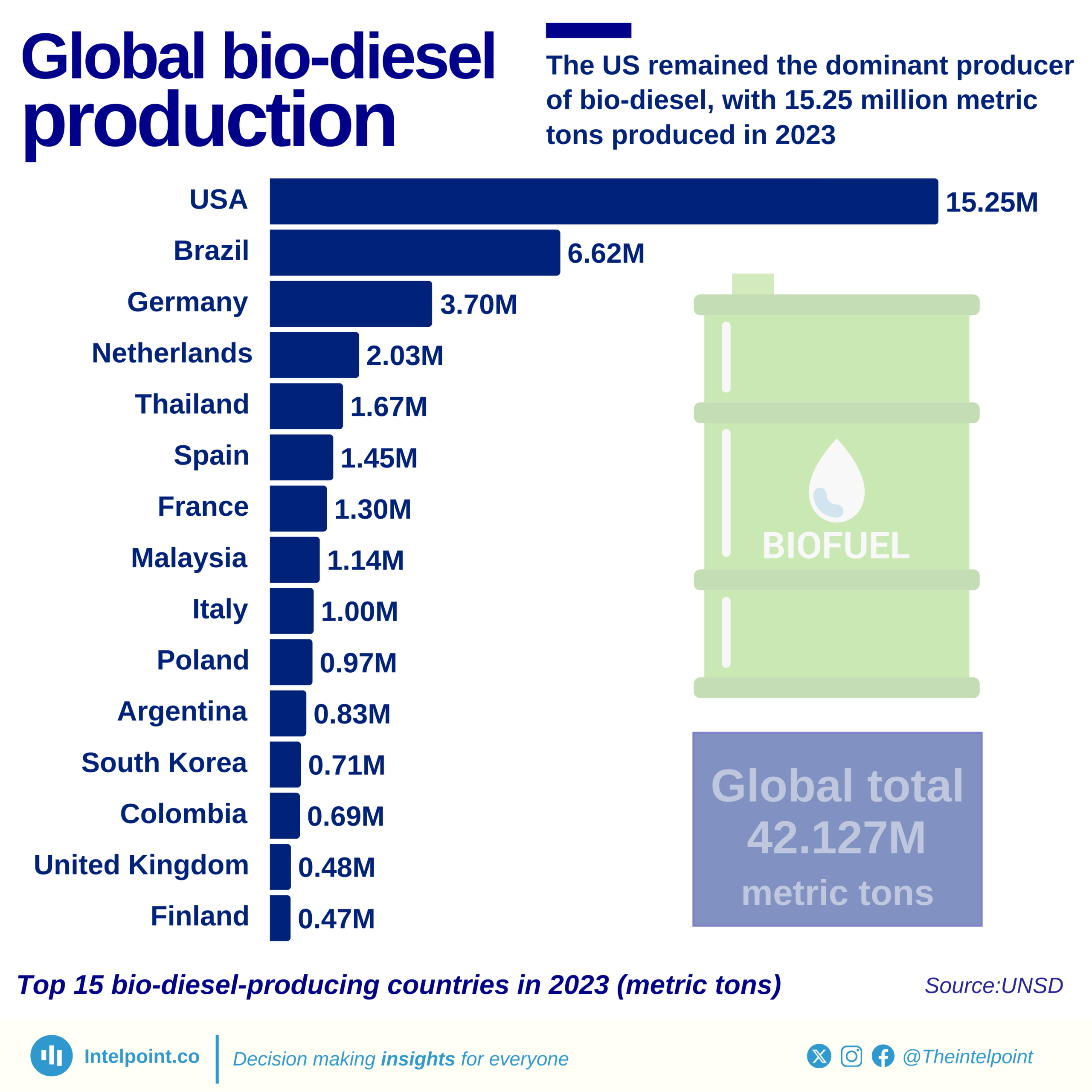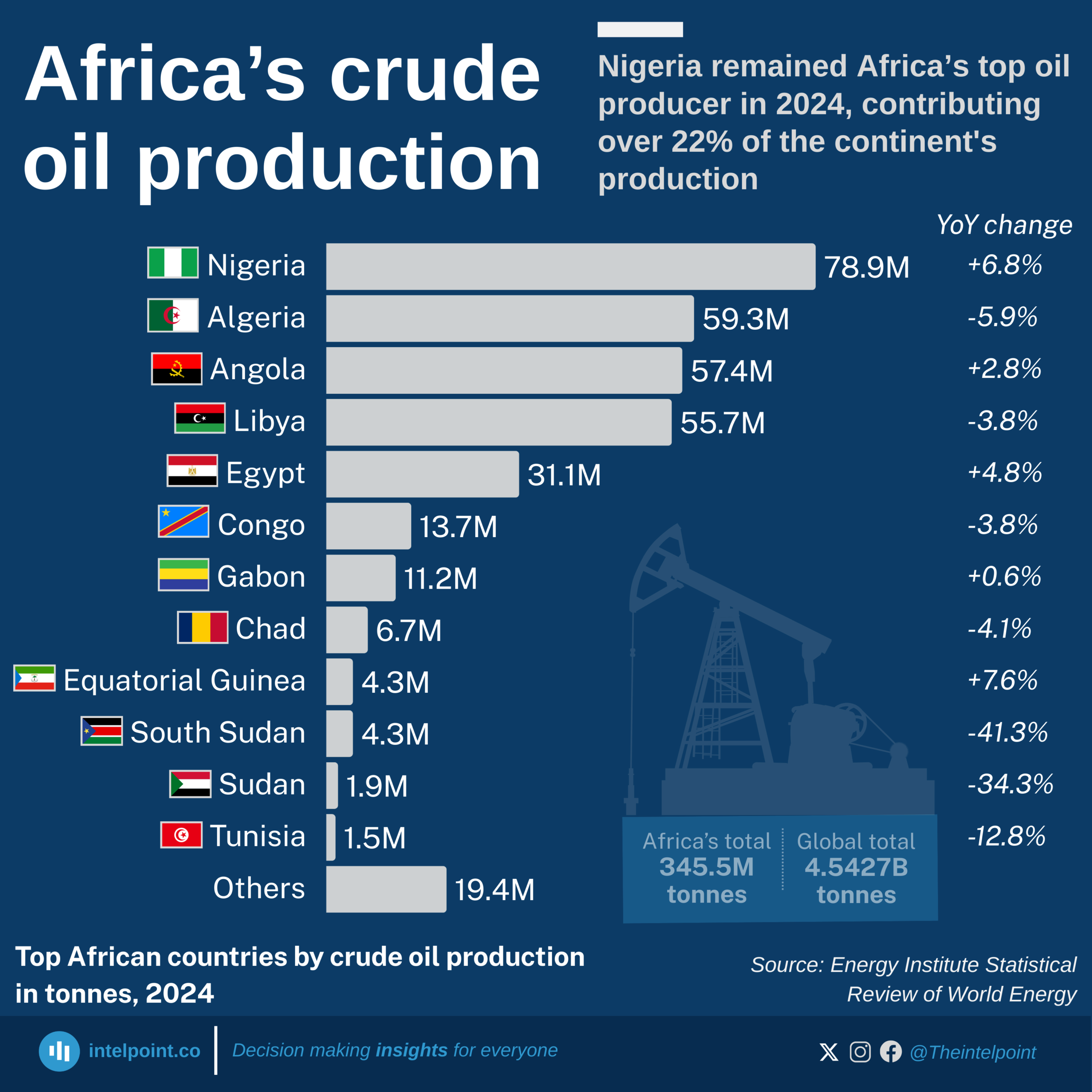The United States dominates global natural gas production in 2024, contributing 1.03 trillion cubic metres (Tcm), nearly one-quarter of the world’s total.
Russia (0.63Tcm) and Iran (0.26Tcm) follow as the second and third largest producers.
China (0.25Tcm) and Canada (0.19Tcm) also feature strongly, rounding out the top five producers.
Collectively, these top five countries account for more than 50% of global production.
Emerging producers like Nigeria, Egypt, and Azerbaijan contribute significantly to the supply but remain far behind the leading nations.
In 2024, global natural gas production was heavily concentrated among a few leading players. The United States stood out as the undisputed leader, producing more than one trillion cubic metres, outpacing Russia by a wide margin. This reflected the US’s continued investment in shale gas and advanced extraction technologies, which have made it a cornerstone of global energy markets.
Russia, while still a strong player, lagged significantly behind the US, yet remained a critical supplier for Europe and Asia. Iran, China, and Canada followed, each playing strategic roles in balancing regional supply and demand. Countries like Saudi Arabia, Qatar, and Australia also highlight how resource-rich nations in the Middle East and Oceania are shaping global energy flows.
Meanwhile, emerging producers such as Algeria, Nigeria, Egypt, and Egypt underscore the growing importance of Africa in diversifying natural gas supply. However, their production volumes were relatively modest compared to the top-tier producers.
Overall, these numbers shows a mix of dominance and diversity: while a handful of nations control the majority of output, smaller contributors ensure global supply resilience.





